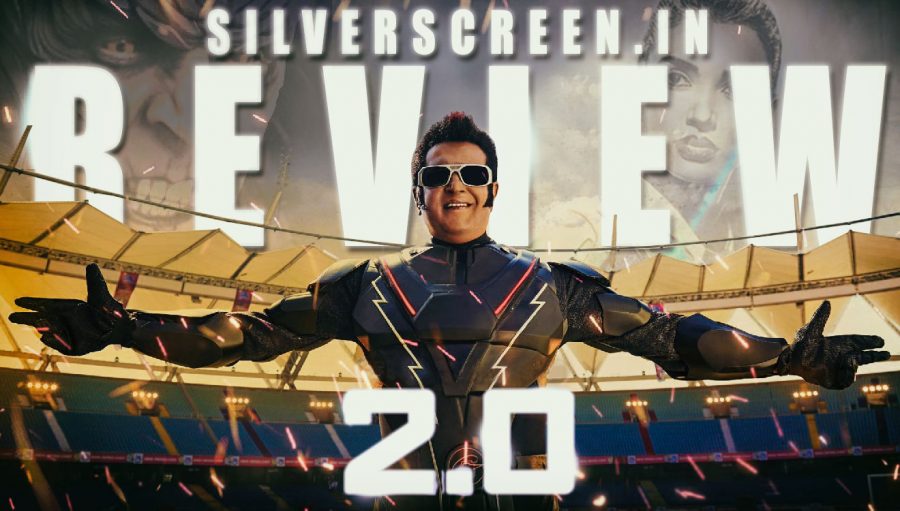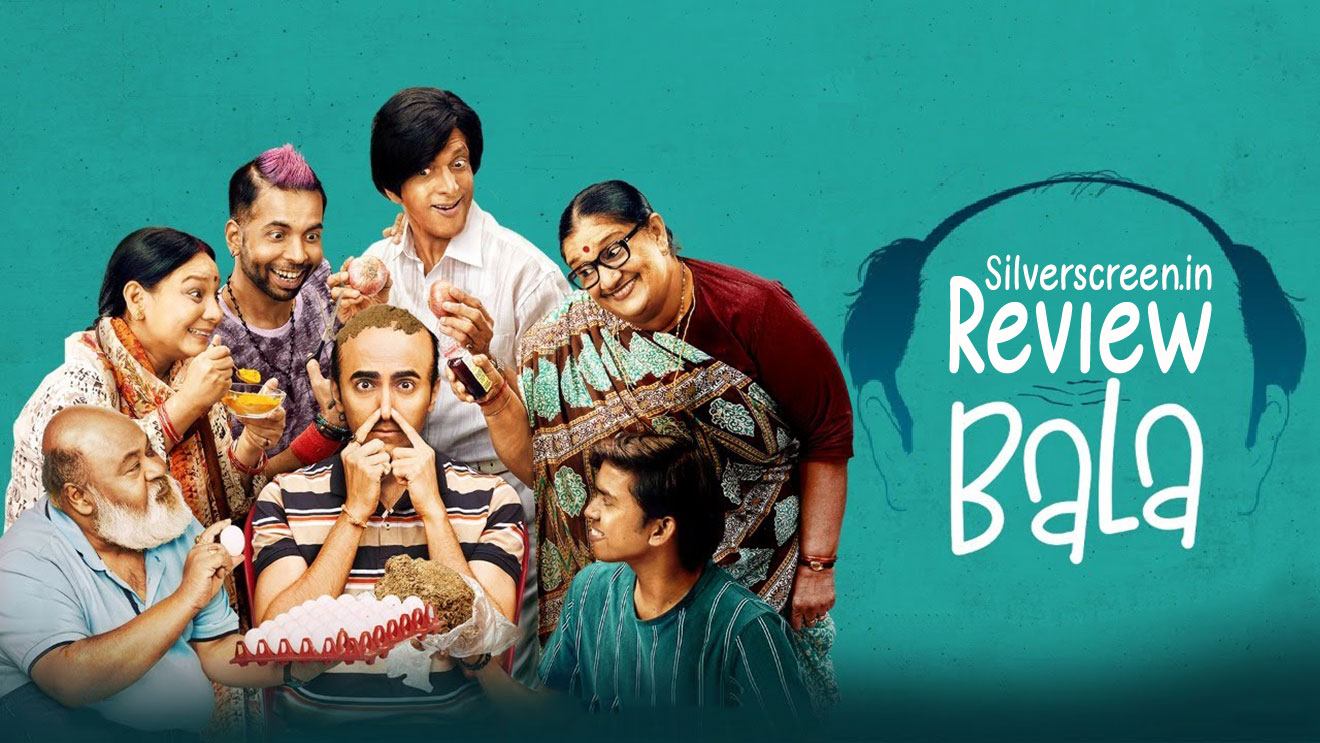Director: Shankar
Cast: Amy Jackson, Rajinikanth, Akshay Kumar
Composer: A R Rahman /Qutub-E-Kripa
In Shankar’s 2.0, right after the scientist Vaseegaran is introduced without much fanfare, cellphones start flying.
Literally.
A guy is on the phone, and he watches his phone fly away. Another guy is on the phone at a different location, and watches his phone fly away. Yet another is on the phone at yet another location, and his phone flies away too. A woman is on the phone, and her phone flies away. Phones fly from funerals, from trains, from cell phone stores. They fly solo, then they team up and fly away in the sky, in giant spiral tornado bands. They just fly.
Yes, you want to get up and scream, we get it. We get that phones are bloody flying.
And then of course, because it is a Shankar movie, people now gather to talk about phones flying.
TV reporters breathlessly tell us that phones are flying. Well, duh, we know. Then, there are conferences where people meet to talk about phones flying. And people rush to the office of the Chennai Police Commissioner, asking the cops to help them recover their cellphones that have flown away. While all this is happening, the phones, they just keep flying out of people’s hands.
And yet, as yet another phone floats away, a part of you is intrigued. Shankar has set up his hook. Why are phones flying away?
It is a Shankar motif, this repetition. Unsubtle, but brilliantly successful, the director has built a career making gaudy big-budget masalas that pit a common man against a system. The repetition helps him reinforce the odds against his heroes, one man, defeated once. Then defeated again. And again. And again. Like how phones fly over and over. Then the man who was defeated rises up in anger, and the crowd rises with him.
*****
And now, the flying phones come down to the Earth as a group, and up the ante significantly, adding murder to their list of crimes. Proper murder. Done using flying phones, that now seem to have learned how to crawl along the floor as well. In 3D, the phones come at you before missing you and going on to hit the target.
File this away for the future, dear reader: If you are ever confronted by a murderous phone, keep your mouth tightly shut. You’ll thank me for it.
Meanwhile, the phones are waging war on the military and winning.
Equally meanwhile, Vaseegaran is telling a giant conference room filled with two talking persons and innumerable nodding persons that the only way to win over the cellphones is to switch them all to Aircel service bring his truant robot, Chitti, back to life. He is accompanied by his robotic assistant Nila, who is played by another robot named Amy Jackson.
And now, the movie begins. We want to know who Chitti is going to fight?
And now, the movie ends. Because Shankar does not seem to know who Chitti is going to fight.
A hateful monster? A bird? A bird made out of cellphones? Perhaps a man who is married to Twinkle Khanna?
Rumour has it that he is still trying to figure that one out.
*****
In his book ‘Thiraikathai Ezhuthuvathu Eppadi’ [How to Write a Screenplay], the late writer Sujatha, a frequent collaborator with Shankar, cites Shankar’s screenplays as an exemplar of effective screenwriting in Tamil. Shankar’s previous efforts, Gentleman, Mudhalvan and Indian were brilliantly written, weaving in convincing plots with sleaze and mass appeal that made their audience root for the hero. But after I, Shankar’s writing has deteriorated, coinciding perhaps with the death of his frequent collaborator, Sujatha.
For 2.0, Shankar has collaborated with the acclaimed Tamil writer Jeyamohan, whose record as a writer for films is not so stellar. Sarkar and Kadal.
Because, 2.0 has neither a lovable protagonist, nor an antagonist worth hating. All it offers are gibberish pseudoscience about auras and radiation and frequencies. Also, flying phones.
*****
For a movie that is about science – even fictionalised – the sheer incompetence in even basic scientific facts is mind boggling. The Cellular Operators Association of India objected to 2.0‘s depiction of cellphones (and towers) in the movie, and for once, it is hard to argue against their objections. Shankar uses pseudoscience and made up facts to accuse cell phones of causing harm to humans and people, and it is hard to dismiss these as writer’s liberty when the hero makes an earnest appeal at the end that validates these claims.
No, carriers don’t increase the “frequency” of their towers.
In this movie, someone is mad because cellphones kill…birds. Glass windows, which are also known to kill birds, keep shattering in the movie. Win – win.
*****
I think phones have stopped flying by now, because nobody has one. I have one, though and I am clutching it tightly.
*****
AR Rahman, whose most popular track for this movie (‘Endhira Logathu Sundariye’) is used in the end credits, outsources his background score to his music students, Qutub-E-Kripa. One wants to complain about the background score, but when you realise that Shankar’s preferred alternative is Harris Jayaraj…
Qutub-E-Kripa and AR Rahman, they are fine. They do a great job.
*****
Shankar repeats a few favourite themes of his, Thirukalukundram and birds; lonely landscapes where people get murdered in exotic fashion. And the Anniyan trope of the same person morphing into two different characters instantaneously.
*****
By now the cellphones have figured out how to arrange themselves in formations, as has Chitti. Nila is also fighting and resuscitating Chitti, while wearing tight-fitting robot clothes that look suspiciously like the clothes humans wear when cycling. There are stunts where the formations fight each other, guns blazing away. The stunts made me want to watch phones flying away.
Also, if Chitti carried a battery pack, the movie would be so much shorter.
*****
Recommended
And then, ‘Endhira Logathu Sundariye‘ came on. I tell myself that Rajinikanth’s next movie is Petta.
The visual effects are well-executed, which is about par for a movie with a budget as high as this one; but poorly conceived, which is about par for this movie. Each stunt seemed to end the same way, one robot entering the other and exploding. The camerawork and the visuals, the sound recording and special effects, they all cannot mask the fact that 2.0 is mostly a badly-written big budget bore.
*****
The 2.0 review is a Silverscreen original article. It was not paid for or commissioned by anyone associated with the film. Silverscreen.in and its writers do not have any commercial relationship with movies that are reviewed on the site.



